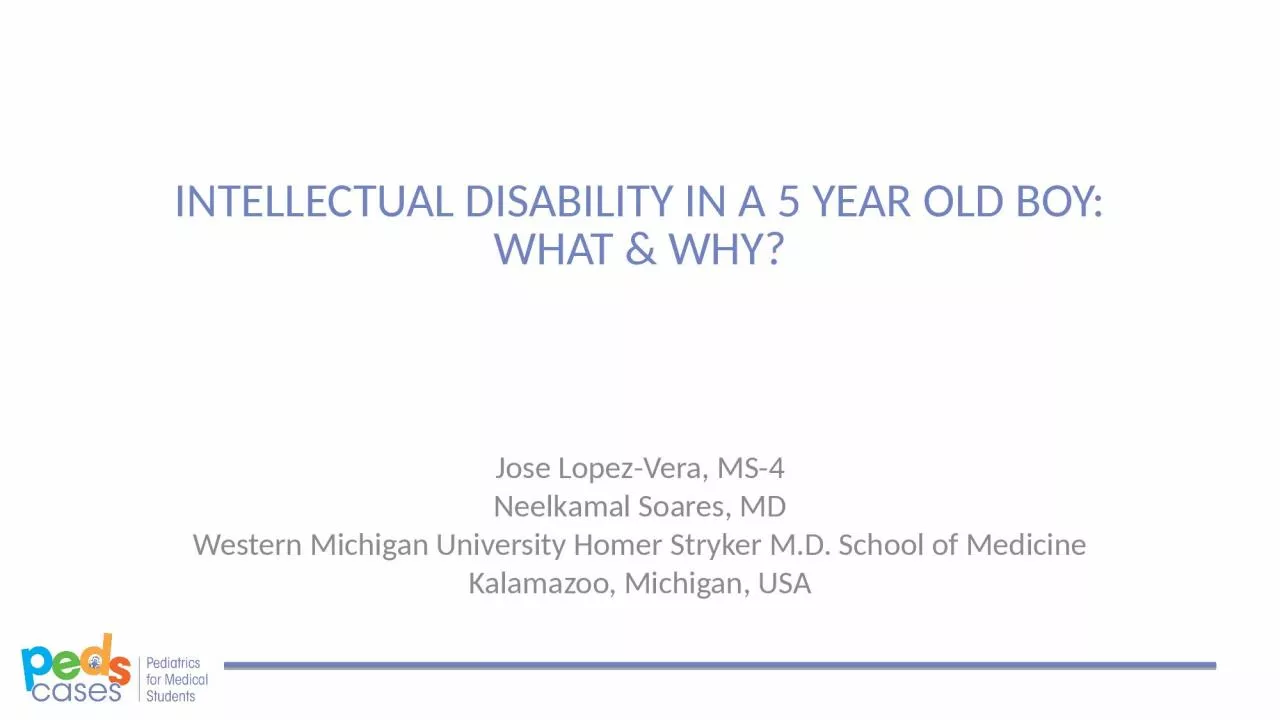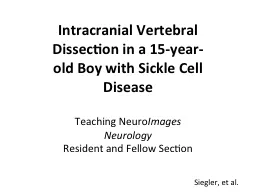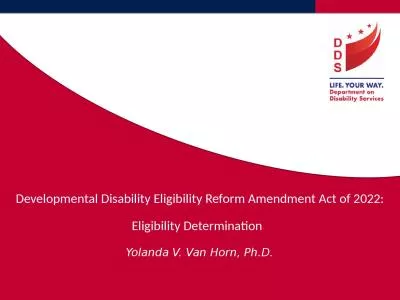PPT-INTELLECTUAL DISABILITY IN A 5 YEAR OLD BOY: WHAT & WHY?
Author : smith | Published Date : 2024-03-13
Jose LopezVera MS4 Neelkamal Soares MD Western Michigan University Homer Stryker MD School of Medicine Kalamazoo Michigan USA OBJECTIVES After this podcastdiscussion
Presentation Embed Code
Download Presentation
Download Presentation The PPT/PDF document "INTELLECTUAL DISABILITY IN A 5 YEAR OLD ..." is the property of its rightful owner. Permission is granted to download and print the materials on this website for personal, non-commercial use only, and to display it on your personal computer provided you do not modify the materials and that you retain all copyright notices contained in the materials. By downloading content from our website, you accept the terms of this agreement.
INTELLECTUAL DISABILITY IN A 5 YEAR OLD BOY: WHAT & WHY?: Transcript
Download Rules Of Document
"INTELLECTUAL DISABILITY IN A 5 YEAR OLD BOY: WHAT & WHY?"The content belongs to its owner. You may download and print it for personal use, without modification, and keep all copyright notices. By downloading, you agree to these terms.
Related Documents














